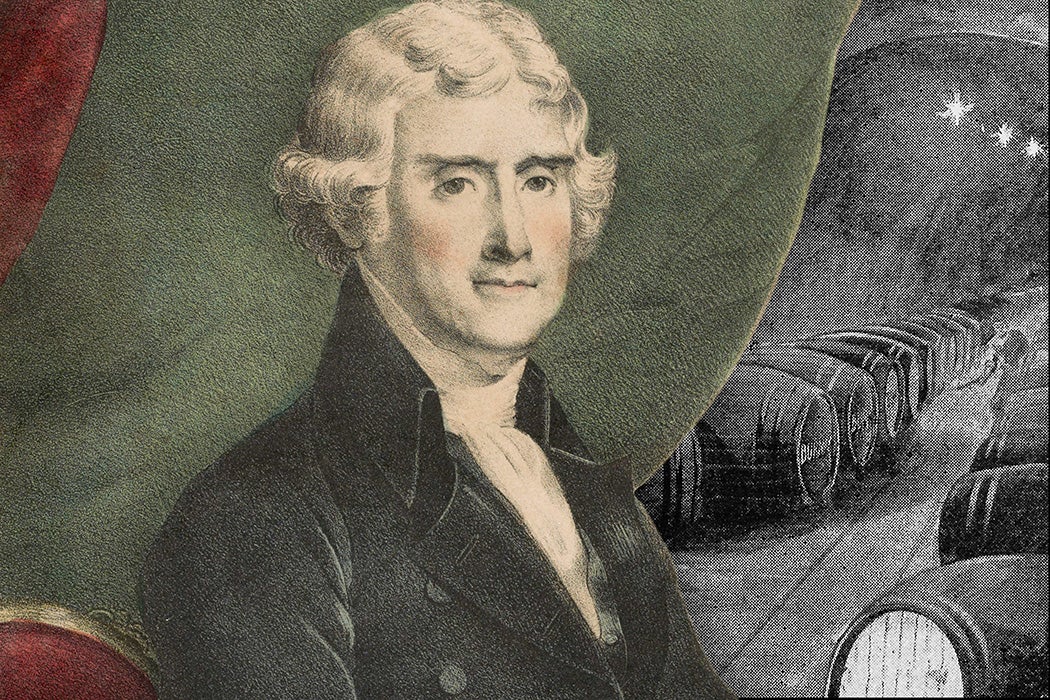When he wasn’t busy being president or gallivanting around France, Thomas Jefferson was obsessed with agricultural experimentation. He—or, more accurately, the men and women he enslaved—grew a variety of European and native crops and prepared them to serve to visitors at his Monticello estate. As historian Gaye Wilson writes, one of Jefferson’s greatest culinary quests was the development of alcoholic drinks.
The idea, Wilson writes, was not simply to produce nice drinks for the Monticello tables but to model a new approach to alcohol for regular people. Jefferson despised whiskey for its “loathsome and fatal effects,” which he argued were “destroying the fortunes, the bodies, the minds, and morals of our citizens.” He hoped that less potent drinks could replace the hard liquor.
Most of all, Jefferson wanted to replicate the European wines he adored. He wrote that “No nation is drunken where wine is cheap, and none sober, where the dearness of wine substitutes ardent spirits as the common beverage.”
In 1774, a winemaker named Phillip Mazzei of Italy arrived in Virginia with eleven indentured Italians in an attempt to set up vineyards in the colony. Jefferson gave him a parcel of land next to Monticello, where the workmen planted a mixture of European and native grape varieties. Jefferson carefully observed and recorded their methods and attempted to replicate them, but with little success. (Winemaking in Virginia wouldn’t really take off until the 1970s.)
Jefferson’s wife, Martha, achieved a better record brewing “small beer,” presumably with a low alcohol content. She, and later other members of the estate, apparently purchased hops from people enslaved at Monticello and other nearby plantations, possibly grown in kitchen gardens or gathered from the wild. In one case she recorded the purchase of “7 lbs. of hops with an old shirt.”
Jefferson’s political career left him limited time for fiddling with fermentation, but after leaving the presidency in 1809, he returned to his experiments. In 1813, he happened to meet an English brewer named Joseph Miller who was living in Virginia. Miller taught his craft to Peter Hemings, the enslaved head chef of the estate.
Weekly Newsletter
Together, Jefferson and Hemings experimented with making malt liquor, ale, and cider. For the malt liquor, the plantation diverted some of its main cash crop, wheat, to the brewing process. Jefferson also tried using corn at one point, but quickly gave up on that idea.
He was also closely engaged in the process of making hard cider, giving highly specific instructions about the preparation of apples for the process. The apple most commonly used for cider was the Hewes crab, but Jefferson preferred a variety known as the Taliaferro. While his initial dreams of grape-based fermentation had been dashed, he pronounced the Taliaferro capable of making a cider “more like wine than any liquor I have ever tasted which was not wine.”







